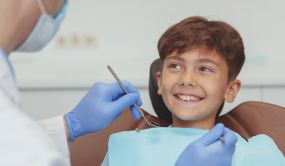Manual Tasks, Not Cell Phone Talking, Boost Crash Risk: Researcher
A new study shows cellphone conversations while driving do not increase crash risk but rather, visual manual tasks cause the problem.
Richard Young, Ph.D., a professor of research at Wayne State University's school of medicine examined possible bias in a 1997 Canadian study and a 2005 Australian study, which used cellphone billing records of people who had been in a crash and compared their cellphone use just before the crash to the same time period the day or week before the control window.
But Young explained that the issue with such studies is that people may not have been driving during the entire control window period and that cellphone conversations may be an overestimated crash risk.
"Earlier case-crossover studies likely overestimated the relative risk for cellphone conversations while driving by implicitly assuming that driving during a control window was full time when it may have been only part time," said Young.
"This false assumption makes it seem like cellphone conversation is a bigger crash risk than it really is."
Young and his colleagues used Global Positioning Satellite (GPS) data to track day-to-day driving of more than 400 drivers during a 100-day period.
According to a news release, researchers divided the days into pairs, with the first day representing the "control" day and the second day representing the "crash" day in the earlier studies. The team found little driving consistency in any given clock time period between the two days, driving time on the control day was only about one-fourth of the driving time on the crash day, during any specific clock time period.
"This underestimation of the amount of driving in the control windows by nearly four times could reduce cellphone conversation time in that control period," Young said.
"It makes it appear that there is less cellphone conversation in control periods than in the time just before a crash, making the relative risk estimate appear greater than it really is."
Young found that the amount of cellphone use in the control window was about the same as in the minutes before a crash, concluding that the crash risk for cellphone conversation while driving is about one-fourth of what was claimed in previous studies.
He pointed out other well controlled studies that found the primary increase in crash risks to be from tasks that require drivers to look at the device or operate it with their hands, such as texting while driving.
"Tasks that take a driver's eyes off the road or hands off the steering wheel are what increase crash risk," said Young.
"Texting, emailing, manual dialing and so forth — not conversation — are what increase the risk of crashes while driving."
Young said that the recommendation that the National Transportation Safety Board has made stating that all 50 states and the District of Columbia ban the non-emergency use of portable electronic devices for all drivers goes beyond data from newer studies, including his, because it would ban cellphone conversations while driving.
"Recent real-world studies show that cellphone conversations do not increase crash risk beyond that of normal driving — it is the visual-manual tasks that take the eyes off the road and the hands off the wheel that are the real risk."
Published by Medicaldaily.com



























